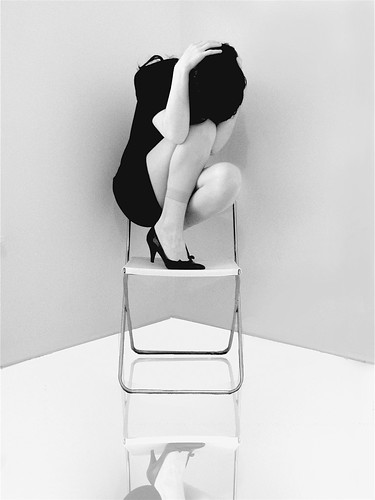A number of factors worked on my warped mind to produce this weeks photos. Firstly I had watched Fur, a strange but inspiring film film about Diane Arbus (well an "imaginary portrait"). Arbus took a voyeuristic approach to photographing her subjects, often circus performers, eccentrics, midgets and transvestites both as fascinating real-life personas and as mythic figures. That gave me the "performer away from the stage" idea. Secondly, two photos from Flickr have been on my mind for a while Crystal Breaking by antiskeptic and The Belly Dancer by Maria Kristin Steinsson, that gave me the "naughty belly dancer" idea. Lastly, I was going to spend a couple of days in a caravan park, you can't really get more British retro than that, that gave me the backdrop and the idea to post-process my photos using vintage retro actions.
So, in the freezing cold, in a caravan park near Skegness, I donned the performer outfit, the props (fag and wine), and spent as little time as possible getting a few pics (it wasn't really the right environment to be standing around semi-naked). In these I'm trying to capture the performer outside of the performance, as a persona with issues and an unglamorous lifestlye despite the sequins and glitter. I would have liked to have a spent longer composing these, but unfortunately I didn't get the opportunity. They are not as good as I would have liked. Bit disappointed.
The post-processing was incredibly easy after I found this tutorial on Retro Colours which uses Photoshop's "Match Colours" filter. I tried some with high contrast Black and White too, channel-mixing to monocrome from the retroized images then fading to colour and boosting the contrast. Again, I can't decide which I like best. Below are some of my attempts, the best few I've put in my Flickr Account.















